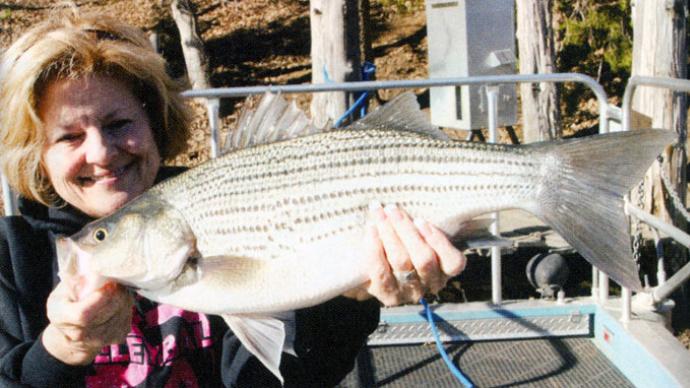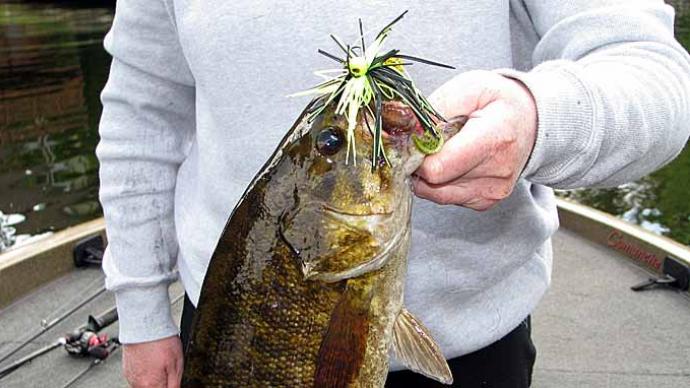Black bass are widely distributed in North America, occurring in every state of the United Sates except Alaska. Several species and subspecies exist, but these three are the most important:
Largemouth:

The scientific name for the largemouth is Micropterus salmoides. It has a very large mouth and a large upper jaw that extends behind the eye; its color ranges from green to black. Largemouths prefer shallower, warmer water than other black bass species and are most at home in weeds and other thick cover such as brush and timber. If given the option, largemouths will opt for slower current. Largemouths prefer to spawn in shallow, protected areas with hard, dark bottoms near or next to wood. Reedbeds usually contain the best spawning habitat. Their diet is primarily baitfish, although they will eat practically anything they can swallow. The world record largemouth weighed 22 pounds, 4 ounces; most state records are between 10 and 14 pounds.
Smallmouth:

The smallmouth (Micropterus dolomieui) is more bronze or brown in color than the largemouth, and its side markings look like vertical bars (tiger striped). Also, it has a smaller mouth than the largemouth, and its jaw does not extend beyond the eye. The eye has red in it and the largemouths don't. Smallmouths prefer deeper, clearer, cooler water with rocky structure. They are seldom found in stagnant ponds or murky lakes shallower than 25 feet.
In addition to clear waters, the smallmouth bass loves to hold in a moderately swift current. In rivers and streams they stay away from the swiftest sections, where the trout might hold, but prefer pools with a noticeable current to those that are completely stagnant. Like their cousins, smallmouths like heavy structure, such a boulders, rock beds, tree trunks and bridge abutments, but stay away from the heavy weedbeds that largemouths love so much.
Crawfish and insects are mainstays in their diet. But they do eat baitfish when available. The world record smallmouth weighed 11 pounds, 15 ounces, and most state records are between 7 and 9 pounds.
Ninety percent of all smallmouth live in water deeper than 15 feet deep if they can get to it and have access to deeper water. Remember to fish deep - the bank just keeps the water in the lake!
Spotted Bass:
Spotted bass (Micropterus punctulatus) fall between largemouths and smallmouths in many respects, including appearance, and depth, temperature and habitat preferences. Spotted (or Kentucky) bass do not grow as large as the largemouth, and unlike the smallmouth, do not have vertical bars on their sides. They have smaller mouths and jaws like the smallmouth, but are marked with rows of spots below the lateral line. They swim in schools more frequently than the other two black bass and can often be found around deep, rocky structure. The world record spot weighed 10.27 pounds. A trophy in most areas where they are found is 5 pounds.



